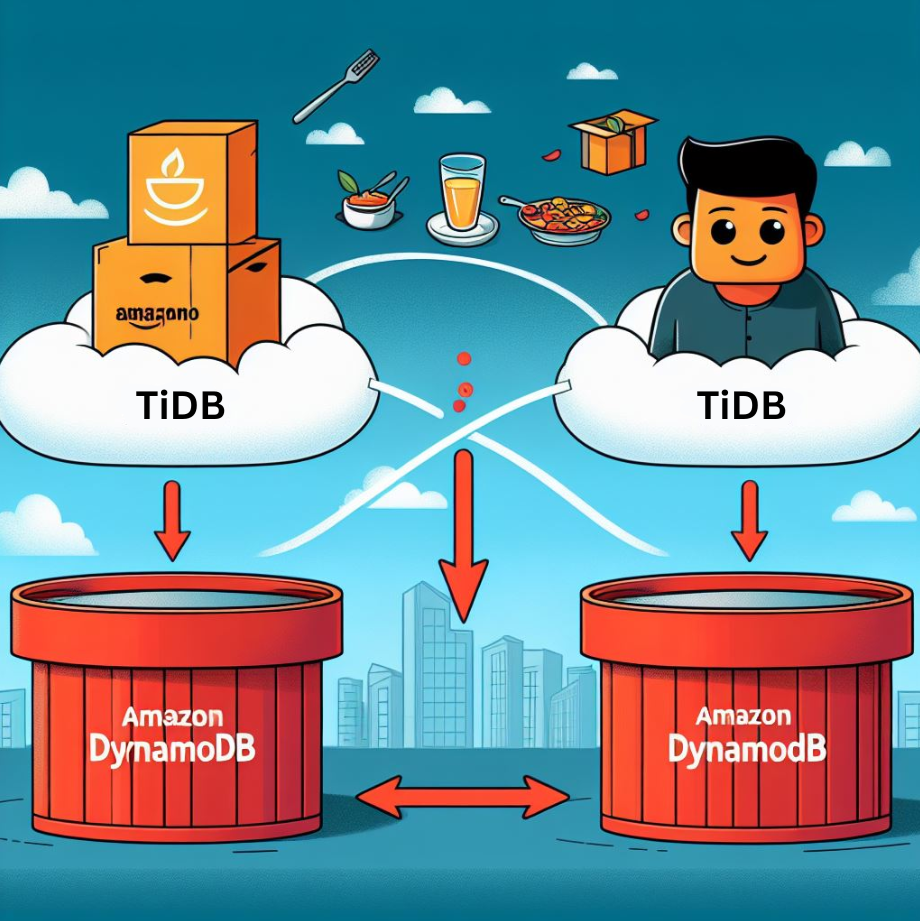
Zomato has millions of customers, restaurants, and delivery partners who rely on its platform. Therefore, ensuring a seamless and efficient technology stack is paramount for them.
Recently, Zomato strategically decided to migrate from its existing database solution to Amazon DynamoDB. This transition was not taken lightly, as it involved a vast amount of data and had the potential to impact the entire ecosystem.
In this article, we’ll explore the reasons behind Zomato’s decision to choose Amazon DynamoDB over TiDB, the challenges they faced, and the strategies they employed to overcome them.
The Need for Scalability and High Availability
As Zomato’s user base continued to grow exponentially, its existing database solution, TiDB, struggled to keep up with the ever-increasing demand. TiDB is an open-source, distributed SQL database that aims to provide horizontal scalability, high availability, and high performance. However, as Zomato’s data volume and traffic surged, they experienced limitations in scaling their database infrastructure effectively.
One of the most significant issues Zomato faced was the need for seamless horizontal scalability. Their database needed to handle the massive influx of data generated by their platform while ensuring consistent performance and reliability. TiDB, while capable of scaling horizontally, presented complexities in managing and maintaining the distributed database clusters.
Furthermore, Zomato’s mission-critical applications demanded high availability and fault tolerance. Any downtime or disruption in their database could potentially lead to severe consequences, such as order delays, customer dissatisfaction, and revenue loss. While TiDB offered high availability through its multi-node architecture, managing and configuring failover mechanisms proved significantly daunting as the system scaled.
Enter Amazon DynamoDB
Zomato noticed a requirement for a reliable, scalable, and highly available database solution that could be simply integrated into its current infrastructure. After careful evaluation, they chose Amazon DynamoDB.
DynamoDB is designed to handle virtually unlimited amounts of data and traffic, making it an ideal choice for Zomato’s rapidly growing platform. One of the key benefits of DynamoDB is its built-in scalability. Unlike traditional databases, DynamoDB automatically scales up or down to accommodate fluctuations in traffic, ensuring consistent performance and avoiding over-provisioning or under-provisioning of resources.
Furthermore, DynamoDB offers impressive read and write throughput capabilities, enabling Zomato to handle massive volumes of concurrent requests without compromising performance or reliability. This was particularly crucial during peak hours or promotional events when the platform experienced significant spikes in traffic.
Overcoming Challenges: From Data Migration to Application Integration
Migrating from one database solution to another is a complex endeavor, and Zomato faced several challenges along the way. One of the most significant hurdles was the task of migrating massive amounts of data from TiDB to DynamoDB without disrupting ongoing operations. You can learn about the challenges that Zomato faces and how they overcome them through a Zomato case study.
Zomato’s engineering team employed a phased approach to data migration, gradually transferring data from TiDB to DynamoDB while ensuring that critical applications remained functional throughout the process. They implemented robust monitoring and failover mechanisms to detect and mitigate any potential issues during the migration.
Another challenge Zomato faced was integrating its existing applications with the new DynamoDB infrastructure. Many of their applications were tightly coupled with the TiDB database schema and query patterns. Zomato’s developers had to meticulously map the existing data models to DynamoDB’s key-value store structure, ensuring that application logic remained intact and consistent.
Zomato used AWS integration services to facilitate this transition and utilized AWS Data Pipeline and AWS Glue, which streamlined the data extraction, transformation, and loading processes. Additionally, they utilized AWS Lambda and AWS Step Functions to orchestrate and manage the migration workflows, providing greater control and visibility over the entire process.
Embracing Serverless & Cost Optimization
One of the significant advantages of adopting Amazon DynamoDB was the ability to leverage the serverless nature of the service. With DynamoDB, Zomato no longer needed to provision, scale, or manage servers for their database infrastructure.
Moreover, DynamoDB’s pay-per-use pricing model enabled Zomato to optimize their operational costs. Instead of paying for provisioned capacity, they only paid for the resources they consumed, leading to significant cost savings, especially during periods of lower traffic or demand.
Zomato’s engineering team also leveraged AWS Auto Scaling and AWS CloudWatch to monitor and automatically adjust DynamoDB’s capacity based on real-time traffic patterns. This ensured that they maintained optimal performance while minimizing unnecessary costs associated with over-provisioning.
Enhanced Performance & Reliability
By migrating to Amazon DynamoDB, Zomato experienced a significant boost in performance and reliability for its mission-critical applications. DynamoDB’s distributed architecture and automatic partitioning capabilities ensured that data was evenly distributed across multiple storage nodes, reducing hotspots and bottlenecks.
Additionally, DynamoDB’s built-in caching mechanisms and optimized read/write operations contributed to improved application responsiveness and reduced latency. This was particularly beneficial for Zomato’s real-time order tracking and delivery status updates, which required lightning-fast data retrieval and processing.
Furthermore, DynamoDB’s high availability and fault tolerance capabilities gave Zomato peace of mind, knowing that their database infrastructure was resilient to failures and outages.
Continuous Improvement & Future Scalability
Zomato’s migration to Amazon DynamoDB was not a one-time endeavor; it began a continuous journey toward optimizing its database infrastructure and maintaining a competitive edge in the rapidly evolving food delivery industry.
By embracing AWS’s vast array of services and capabilities, Zomato gained the flexibility to integrate and leverage other AWS offerings seamlessly. For instance, they could leverage AWS Lambda to offload compute-intensive tasks, AWS Kinesis for real-time data streaming, and Amazon Athena for big data analytics.
Additionally, Zomato’s engineering team continuously monitored and optimized their DynamoDB usage, leveraging AWS’s comprehensive monitoring and logging tools. They implemented best practices for data modeling, indexing, and query patterns to ensure optimal performance and cost-effectiveness.
As Zomato continues to expand into new markets and introduce innovative features, its database infrastructure remains poised to scale effortlessly. With Amazon DynamoDB at the core of its technology stack, Zomato can confidently handle the ever-increasing demand for its services while maintaining the highest standards of performance, reliability, and cost-efficiency.
Conclusion
Zomato’s decision to choose Amazon DynamoDB over TiDB was a strategic move that addressed the company’s pressing needs for scalability, high availability, and cost optimization. By embracing Amazon DynamoDB, Zomato was able to offload the complexities of database management and focus on its core business objectives.
The migration process was properly planned and implemented. They have overcome data migration, application integration, and infrastructure orchestration challenges. Leveraging a suite of AWS migration services, Zomato streamlined the transition while minimizing disruptions to its ongoing operations.
The benefits of this migration were evident in the enhanced performance, reliability, and cost-effectiveness of Zomato’s database infrastructure. With DynamoDB’s automatic scaling, caching mechanisms, and distributed architecture, Zomato’s mission-critical applications experienced improved responsiveness and reduced latency.
Zomato’s migration to Amazon DynamoDB serves as a testament to the power of leveraging cloud-native technologies and embracing a data-driven approach to business growth. By making strategic decisions and investing in robust, scalable infrastructures, companies like Zomato can stay ahead of the curve and deliver exceptional experiences to their customers.
In case you have found a mistake in the text, please send a message to the author by selecting the mistake and pressing Ctrl-Enter.






